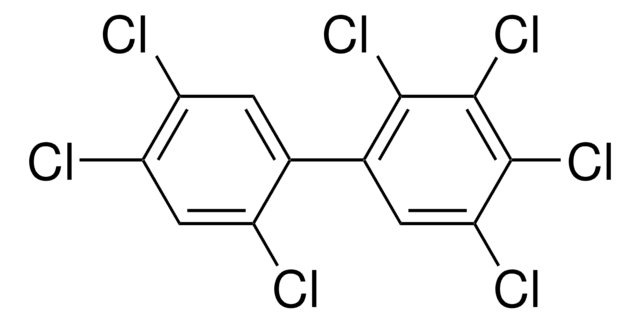35586
PCB No 1
analytical standard
Sinónimos:
2-Chlorobiphenyl
About This Item
Productos recomendados
grado
analytical standard
Nivel de calidad
caducidad
limited shelf life, expiry date on the label
técnicas
HPLC: suitable
gas chromatography (GC): suitable
aplicaciones
environmental
formato
neat
cadena SMILES
Clc1ccccc1-c2ccccc2
InChI
1S/C12H9Cl/c13-12-9-5-4-8-11(12)10-6-2-1-3-7-10/h1-9H
Clave InChI
LAXBNTIAOJWAOP-UHFFFAOYSA-N
Descripción general
Aplicación
Palabra de señalización
Warning
Frases de peligro
Consejos de prudencia
Clasificaciones de peligro
Aquatic Acute 1 - Aquatic Chronic 1 - STOT RE 2
Código de clase de almacenamiento
11 - Combustible Solids
Clase de riesgo para el agua (WGK)
WGK 3
Punto de inflamabilidad (°F)
Not applicable
Punto de inflamabilidad (°C)
Not applicable
Equipo de protección personal
dust mask type N95 (US), Eyeshields, Gloves
Choose from one of the most recent versions:
¿Ya tiene este producto?
Encuentre la documentación para los productos que ha comprado recientemente en la Biblioteca de documentos.
Nuestro equipo de científicos tiene experiencia en todas las áreas de investigación: Ciencias de la vida, Ciencia de los materiales, Síntesis química, Cromatografía, Analítica y muchas otras.
Póngase en contacto con el Servicio técnico










